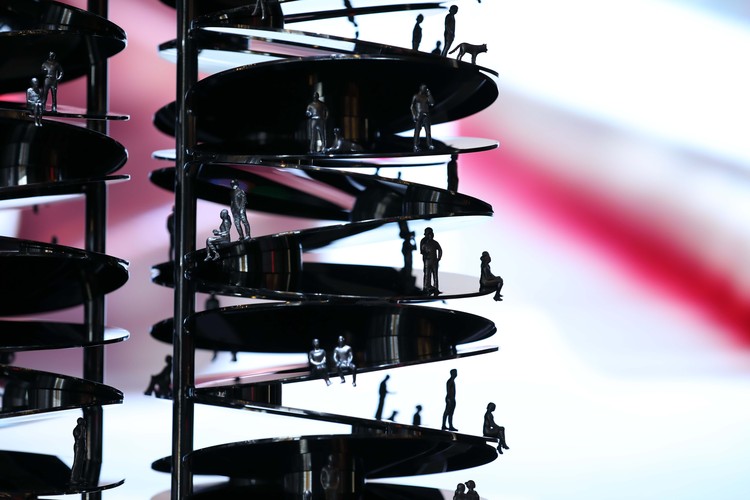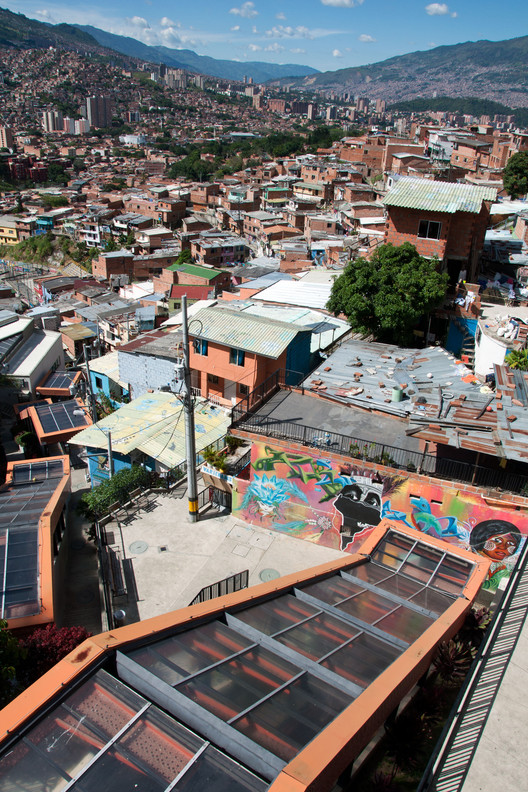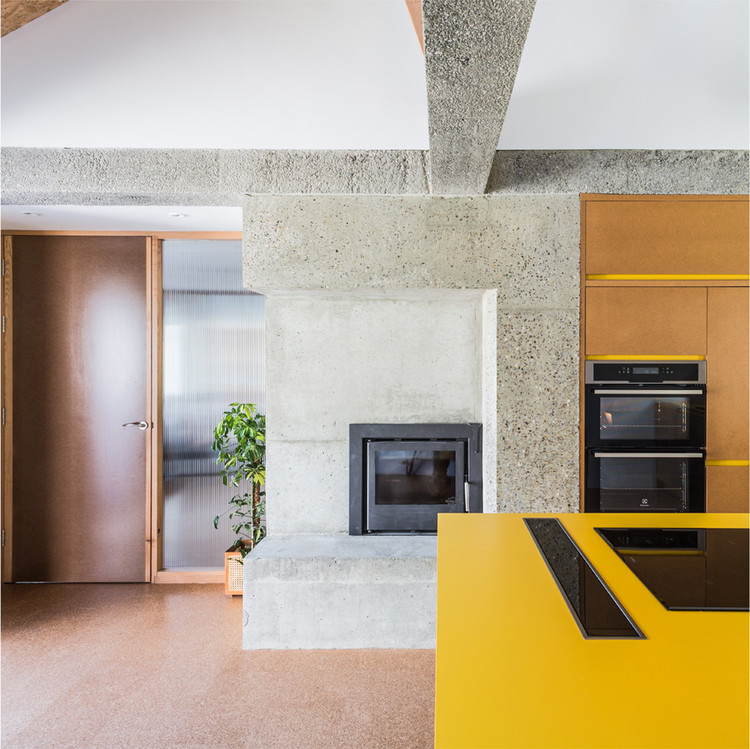
Creating a model for rendering does have its own set of rules. To get you up and rendering as quickly as possible, here are SketchUp's top five tips for prepping your SketchUp model for rendering.


Creating a model for rendering does have its own set of rules. To get you up and rendering as quickly as possible, here are SketchUp's top five tips for prepping your SketchUp model for rendering.
In celebration of Paulo Mendes da Rocha's 89th birthday, we take a look at "PMR 29': Twenty-Nine Minutes with Paulo Mendes da Rocha", directed by Carolina Gimenez, Catherine Otondo, João Sodré, José Paulo Gouvêa and Juliana Braga.
The film is conducted through a conversation with Rocha, held in his office in 2010. In presenting some of his main works, the architect makes considerations about the understanding of architecture in its human and essentially cultural dimension.

As a trailblazer of Brazilian Modernism, Oscar Niemeyer is celebrated for his bold, sinuous forms, and his use of the “the liberated, sensual curve.” Paul Goldberger described it best when he wrote that “Niemeyer didn’t compromise modernism’s utopian ideals, but when filtered through his sensibility, the stern, unforgiving rigor of so much European modernism became as smooth as Brazilian jazz.”
When Georgio Mondadori, chairman of the Italian publishing house Mondadori, commissioned Niemeyer to design the company’s new headquarters in 1968, he wanted the building to look like the Itamaraty Palace (also known as Palace of the Arches) in Brasília. Niemeyer agreed, but given his playful spirit, he deliberately deviated from the earlier design and proceeded to build what he would later identify as his favorite of the projects he completed in Europe. Read on to see a striking set of sixteen photographs of the Mondadori building by Milan-based photographer and visual artist Karina Castro, who was commissioned by Mondadori to capture their headquarters over 40 years after the building's completion.

“Beauty,” as Umberto Eco tells it, “has never been absolute and immutable but has taken on different aspects depending on the historical period and the country.” So how is beauty defined today in our increasingly globalized world? Perhaps a more interesting question to ask is whether arriving at such a conclusion remains relevant to our society.

The complications of war and violence demanded a bold piece of architecture to provoke the public's understanding of the impact it had on Germany. Daniel Libeskind chooses to engage with such events in his extension to Dresden's Military History Museum, by crashing a huge steel and concrete structure through the neoclassical facade, tearing apart the symmetry of the original building. Photographer Alexandra Timpau has captured the sharp edges and harsh angles of the museum's extension that convey the pain and the stark reality of war Libeskind and the museum refer to.

The main objective of the BambooU build and design course is to promote bamboo as a green building material, and to provide tools to architects, designers, builders, engineers, and carpenters from all over the world to value this material and increase its use.
The 2017 version of the course invited its participants to be part of a basic carpentry workshop, in which Indonesian artisans—led by I Ketut Mokoh Sumerta—taught them to build the base of a simple structure in Bamboo, without using other materials and by experimenting with the cutting and joining of different pieces.
See the process of this construction below.

This article was originally published by Archipreneur as "Architect Salaries by Country: Where Do Architects Earn the Highest Salaries."
While the amount of information about architect salaries in specific countries and cities is abundant, there are many discrepancies between different sourced when it comes to country-to-country comparisons. Having a global overview of architect salaries is also tricky to get because of the many variables that go into the equation. You need to take into consideration the position, experience, size of firm, location, not to mention the relationship between earnings and living costs and various tax, insurance and legal differences among different countries.
_(2).jpg?1510571993)
This short essay was written by Elizabeth Darling and Lynne Walker, the curators of AA XX 100 – a multi-media project celebrating the centenary of women in London's Architectural Association (1917-2017).
Zaha Hadid, Amanda Levete, Patty Hopkins, Denise Scott Brown, and Minnette de Silva are familiar names of women who were products of the Architectural Association School of Architecture (AA). Less familiar are the women who paved the way for the global careers of these architecture superstars.
Established in 2013, the AA XX 100 project was initiated to tell the story of women at the AA, with the aim of commemorating the centenary (this year) of their admission to the school with an exhibition, book, and international conference. When the project began we didn't know the names of the first students but, four years on, we do, and in telling their story—and that of the generations of women who followed them—we see that their history is at once a history of the AA and architectural education, as well as a history of British and world architecture across the 20th and 21st Centuries.

In a hilarious TED talk by world-famous blogger Tim Urban, the procrastinating brain is explained using three squiggly characters: Rational Decision Maker, Instant Gratification Monkey, and Panic Monster. For most of us who procrastinate without fail, the Monkey dominates while the Decision Maker suffers. Panic Monster enters the moment a deadline looms dangerously close—and that’s when all the actual work is done, amid much grumbling, self-loathing and lofty promises of never procrastinating again. But of course, we fail to keep our promises and the wheel keeps turning!
While the internet is full of lists and guides on how to stop procrastinating, for quite a lot of people, those somehow just don’t help at all. And while deadlines, as Urban points out, work for some in terms of getting the work done sooner or later, “long-term procrastination” affects those who must set their own deadlines—think business owners, PhD students, or freelancers. So, how do you get yourself to stop? You don’t! What you need to master is John Perry’s concept of “structured procrastination”—the same concept that Piers Steel earlier explained as “productive procrastination.” Read on for some advice gleaned from pro-procrastination literature.

What better way to demonstrate America’s diverse architectural styles than through the country’s most infamous family — The Simpsons? HomeAdvisor has us covered by re-imagining one of TV's most recognizable family homes.
The Simpson family residence is instantly familiar to all, yet their dwelling could have been completely different if they’d embraced one of these popular housing styles.
.jpg?1510247252)
Christian Weber, a 20-plus year veteran of the Burning Man festival has learned a few tricks on the Playa. Shelter from the harsh Black Rock Desert winds, heat, dust and cold nights are attributes of an experienced camp. “Every year we unload our camp out of the container and use our container as our kitchen. It literally has fold-down tables [and] air conditioning… and when we’re all done, we throw it back in the container and it’s ready to go for next year.”

In this essay British architect and academic Dr. Timothy Brittain-Catlin presents the work of Space Popular, an emerging practice exploring the meaning of and methods behind deploying virtual reality techniques in the architectural design process.
Architectural practice, especially in the UK, is moving fast into a realm where history plays as much a part as medium. But the ways in which architects work have been transformed entirely from those of the past, generating a fundamental conflict: how in practice does design through virtual reality use history? In the earliest days of fly-throughs we all realised that we could show our work to clients in a way that even the least plan-literate could understand. We could develop details three-dimensionally and from different angles, even representing different times of day. But what next? How do we engage historical knowledge and experience of buildings?

About thirty years ago, French landscape architect Patrick Blanc became a pioneer in the implementation of vertical gardens in Paris, and later in other cities around the world. Through the creation of vertical structures capable nourishing plant species, these systems allow species to grow on the facades of buildings, considerably reducing a structure's internal temperature and allowing the expansion of green areas to new (vertical) territories within the city.
Blanc's creation was part of a series of developments in understanding what nature adds to the city, recognizing the value of green spaces and their contribution to social, environmental and urban policies.

New technological developments in construction have given architects great freedom when designing. Innovations in construction materials and their properties allow for the creation of increasingly original and surprising facades. The buildings constructed as a result can even inspire people to travel thousands of kilometers just to see these masterpieces. This week, we present 15 of most ground-breaking facades through photos by prominent photographers such as Paul Ott, Peter Bennetts and Laurian Ghinitoiu.

The Minnesota Experimental City (MXC)—a utopian plan for the city of the future that was decades ahead of its time, and yet is surprisingly little-known—was the brainchild of the urban planner and technocrat Athelstan Spilhaus. Spilhaus was a man who saw science as the solution to the problems of the world, and became a public figure presenting his ideas of utopia in everyday life through his comic strip "Our New Age." During the mid-1960s, he conceived an ambitious plan to condense his ideas into a prototype for future cities that would be both noiseless and fumeless, accommodating America's growing population and their by-products.
A new documentary, The Experimental City, explores the development, and ultimately, failure of the MXC's vision for future settlements. Using retro film clips, it takes us back in time to a period where Spilhaus' predictions of computers that can fit into your home and remote banking appeared more of a fantasy than reality. The film is directed by Chad Freidrichs (known also for his 2011 film The Pruitt-Igoe Myth) and was premiered at the Chicago Film Festival, in conjunction with the Chicago Architecture Biennial. Several further screenings will be taking place across the country, including at DOC NYC on November 16th.

The Southbank Undercroft, which lies beneath the Queen Elizabeth Hall along the River Thames in London, has been the subject of much debate in recent years following a proposed closure and redevelopment in 2013. Long Live Southbank, an organization born out of this threat of expulsion, gave the diverse community who call the space home a voice. After 17 months of campaigning, they were successful in ensuring the Undercroft was legally protected and fully recognized as an asset of community value. Since then, the group of activists has begun another groundbreaking journey.
In partnership with Southbank Centre, Long Live Southbank recently launched a new crowdfunding campaign to restore the legendary Undercroft. The restoration project will cost £790,000 and is set to open in 2018, improving Londoners’ access to free creative spaces in the heart of the City. These types of space are becoming increasingly rare and the restoration effort reflects a desire to celebrate the authentic cultural sites that make London the vibrant landscape it is.
In addition to their videos, #donotsettle’s Wahyu Pratomo and Kris Provoost tell extended stories about the buildings they visit through an exclusive column on ArchDaily: #donotsettle Extra. In this installment, the duo brings you to the newest design by OMA, Rijnstraat 8 in The Hague, The Netherlands. Saskia Simon and Kees van Casteren from OMA explained the architecture of Rijnstraat 8 to #donotsettle while touring the building.
This project, which houses a variety of Dutch government agencies, is an example of a spatial alteration that occurred as result of political and organizational changes. However, given the existing structure by architect Jan Hoogstad, OMA has transformed the architectural experience of the building from within.

This article was originally published by Common Edge as "Enduring Principles of Art That Also Apply to Architecture."
It is safe to say that architects, academics, critics and even the public have been arguing about the merits of architectural style for centuries. Even during the course of my own career, the more general style categories of contemporary-vs-traditional have continued in an unabated battle. For better or worse, contemporary has generally won out as the default position for most schools and publications, probably because of the sheer visual entertainment value it offers, and the lucrative merits of its two stepchildren, branding and advertising.
I’d like to propose another position: that certain enduring principles of art, rather than any temporary style—and, remember, they are all temporary—should be our real architectural goal. This presumption means you must be agnostic when it comes to style and put aside any notion of an ideological stance regarding the right or wrong of your architectural preferences. There are those, of course, who say that to imagine that “my art” is better than yours, or even that I can define real art in the first place, is a fool’s errand.
I think otherwise.

Amazon’s open call for bids for its new headquarters, HQ2, closed last month, but in the months leading up to the final decision in 2018, analysts will continue to flood the internet with detailed studies evaluating who they believe should be the winner. In other words, the mirror-mirror-on-the-wall game for cities is just starting to warm up.
Earlier, ArchDaily reported on the data-driven approach adopted by Moody’s Analytics which projected Austin, TX as the winner. But another study by IT education company Thinkful now points towards Washington DC as the city most likely to make the cut. So what makes Washington DC the fairest of them all? Read on to see how data science techniques helped analysts at Thinkful with this prediction, what kind of approach they adopted, and how it differed from that of Moody’s Analytics.

As most architecture students and practicing architects find out, all-nighters are (ironically) the stuff of nightmares. They're a last resort when the project is due and you have run out times you can say "I’ll do that tomorrow." All-nighters should be avoided at all costs as they can have many negative effects on your mind such as decreased concentration and reduced long-term memory. Even your body can suffer too; pushing yourself to the limit as you fight tiredness and work as much as physically possible will weaken your immune system and can cause circulatory problems from sitting down for 20 or so hours straight.
In a previous article, we have discussed the many ways in which you can avoid pulling an all-nighter so you don’t have to be as sleep deprived. But sometimes things just don't go to plan, and you may feel that working through the night is the only option. Read on for tips and tricks that should make your all-nighter slightly more bearable (if that's at all possible).

Jaime Lerner defines urban acupuncture as a series of small-scale, highly focused interventions that have the capacity to regenerate or to begin a regeneration process in dead or damaged spaces and their surroundings.
Rather than urban acupuncture, the intervention that took place in the rugged geography of Medellin’s Comuna 13 was like an open-heart surgery, a large-scale action aimed at bringing about physical and social change of what was once one of the most dangerous neighbourhoods in the world’s most dangerous city.
The bilingual guides take us through the neighbourhood, showing us the escalators that gave the intervention worldwide fame. At the same time, in one of the many refurbished squares, a CNN team records interviews with locals and foreigners who visit by the hundreds what was, until recently, an unlikely tourist destination. A drone flies over the scene, we do not know if it is operated by the omnipresent police, CNN or tourists.

More and more, the kitchen is gaining importance in house design, in many cases serving as the center around which the rest of the spaces unfold. For this reason, this week we present a selection of 15 images of kitchens, from different parts of the world, which allow us to appreciate the variety of configurations, materials, and shapes now used in this important space. Read on to see the images of photographers including BoysPlayNice, Peter Bennetts, and Juane Sepulveda.

Deeply rooted in the phenomenological ideas of Maurice Merleau-Ponty, Steven Holl’s architectural philosophy is centered on human experience, materiality, and a thorough engagement with the site or context. But more than his experiments with space and material, he is best known for his mastery over what is perhaps his favorite material, or medium: natural light.
His design for the Visual Arts Building at the University of Iowa, seen here through the lens of photographer Aaron Dougherty, is one of his projects that best explores these concerns. Clad in weathering zinc and stainless steel, the four-story building houses studios, teaching spaces, galleries and faculty offices for all visual arts departments—from Ceramics, Jewelry Design and Sculpture, to Printmaking, Painting, Video Art, and 3D Design.